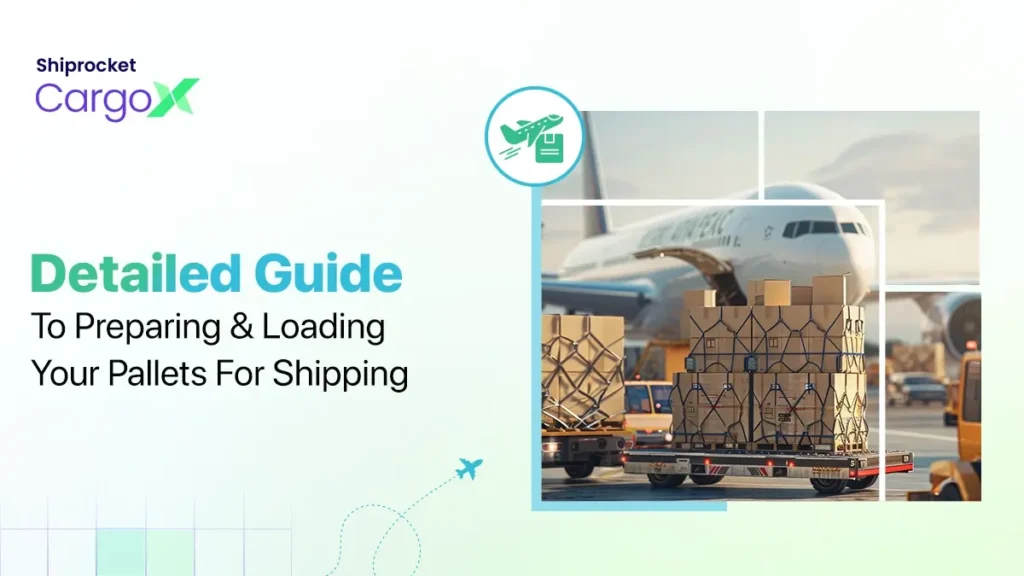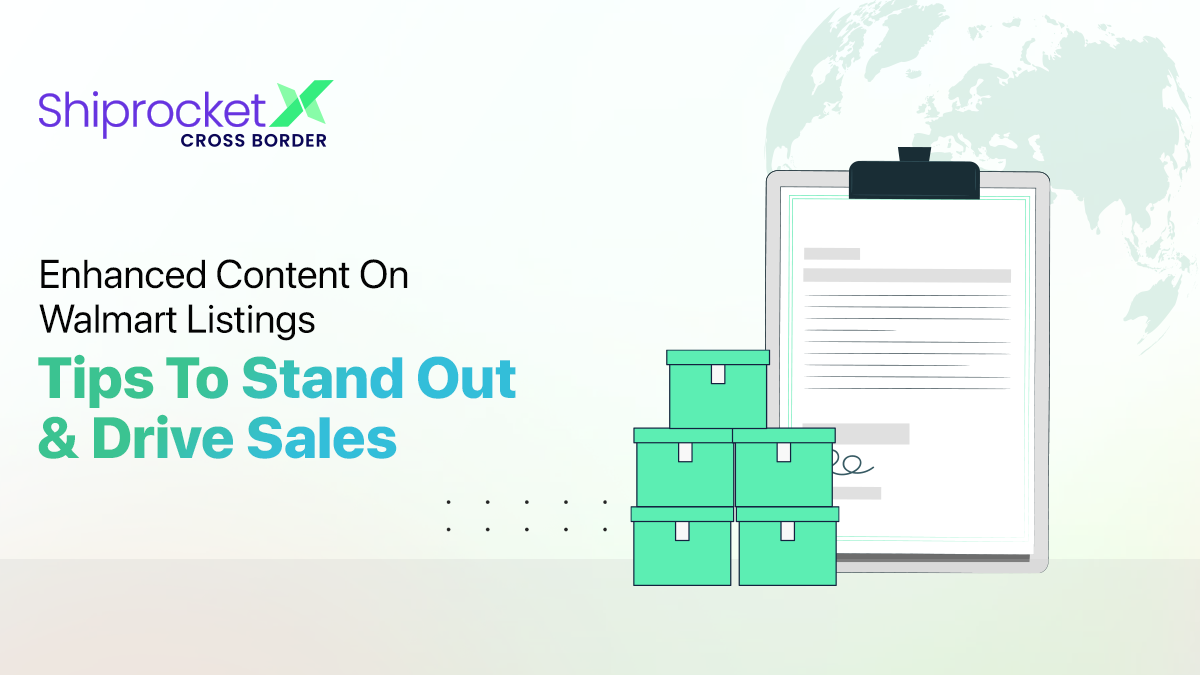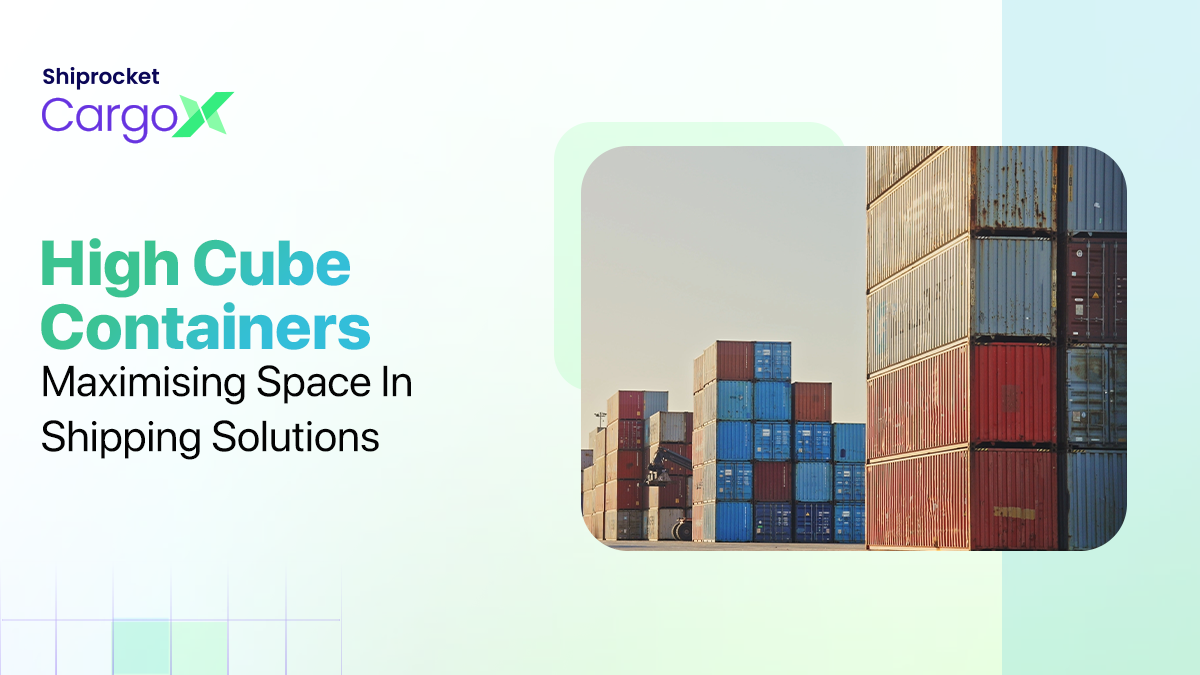Pallet Shipping 101: Optimise Costs & Boost Efficiency
Pallet shipping provides an opportunity to present solutions to cut costs and streamline operations.
A survey by Gitnux shows that the global pallet market is expected to grow at a CAGR of 5.1% from 2021 to 2028.
Pallet shipping helps you optimise trailer space and benefit from bulk shipping rates. It also enables your product to be securely bundled and protected on all sides from possible damage.
Their ease of loading and unloading with lift fastens your delivery processes. Pallets work as a moveable platform, making it easier to move your goods within your facility and load them into trucks and containers.
Pallet shipping can give you a competitive edge by cutting costs and boosting efficiency. This blog will provide everything you need to know about pallet shipping.

What is Pallet Shipping?
Pallet shipping involves transporting goods and cargo in bulk from one location to another using boxes or parcels stacked in a pallet.
Your products will be securely bundled on pallets using stretched wrapping or straps. This can help you protect your items and also make the items appear as a single load when shipping.
Pallet shipping allows the loading and unloading of heavy shipments. It also allows you to optimise the use of space in trucks and shipping containers.
Pallet shipping provides an organised and safe way for bulk cargo delivery to help you streamline your logistics operations.
How to Choose the Right Pallet for Your Goods?
One of the problems many sellers face is deciding which pallet to choose for their goods. Research thoroughly about available options and choose a suitable one based on your needs.
Some of the factors to consider when choosing a pallet for your goods include:
- Pallet material
Wooden pallets are the most commonly used pallets. However, you might need more modernised pallets made from steel, aluminium, and plastic, depending on the needs of your goods.
Wooden pallets are quite affordable and can be reused, but it is important to know that they can break down over many uses. Plastic pallets seem to be more durable, but they are quite expensive. Whichever pallet you choose, you must consider your product’s weight, transport conditions, and budget.
- Pallet size
Standard international pallet sizes are 48” × 40”, 40” × 32”, and 36” × 36”. Select the correct pallet dimensions based on the dimensions of your goods, truck space, and delivery equipment. Note that oversized pallet sizes will collide with spaced undersized pallets and will not fully support the condition of your goods.
- Load capacity
This is especially important to ensure safety during handling and transportation. You should know that wood pallets can hold 2000-3000 pounds safely, and reinforced pallets can carry more weight.
- Nature of the product
For delicate or exposed items, choose an impermeable plastic pallet to protect the items from moisture, which can cause damage, mould, or contamination.
Plastic pallets create a barrier against water, ensuring your goods remain dry and safe during storage and transport, especially in humid or wet conditions.
Wooden pallets can absorb moisture or dirt if the products are placed directly on the slat.
- Cost evaluation and durability
Consider the total long-term pallet cost instead of the initial price. Also, durability can influence how often you need to buy replacements.
In this case, wood pallets are the best choice because of easy repairs. You can also rent pallets based on availability.
Research popular pallet manufacturers and rental companies. Give them your product details so they can recommend a suitable pallet choice for you.
Best Practices for Preparing and Loading Pallets
Preparing and loading your goods in pallets for shipping is important to avoid damage.
Here are some common practices to prepare and load your pallets:
- Prepare your pallets
Before loading your products, prepare the pallets. Conduct a thorough inspection of the pallets to know if there are any cracks or any areas of weakness. Make sure to repair or replace it if you notice any issues.
Clean off any dirt, and make sure you lay down a plastic sheet or paper before placing your goods in case you are using a wooden pallet, to avoid stain or damage.
- Choose the appropriate pallet
Choose the appropriate pallets that are suitable for your product’s weight, size, and transportation needs.
Consider the durability of the pallets. Plastic pallets seem to be the best option in wet environments, but they are quite expensive.
- Wrap your goods properly
Wrapping your pallets securely keeps your goods in place. You can use plastic stretch film or wrap. You should avoid wrapping directly over the edges of the carton to promote neat application. Label the destination of the carton at the top for clear visibility.
- Load the pallets evenly
When loading, ensure the weight is evenly distributed on the surface of the pallet and between all layers. You can place heavier items at the bottom and lighter ones on top. Loads in the pallets must remain balanced during transit.
- Label your pallets carefully
- Store your pallet in a clean and dry space on levelled ground
Shipping Pallets: Logistics and Transportation Considerations
Shipping pallets play an important role in handling and transporting goods throughout logistics. As reusable items for stacking materials, they facilitate the efficient movement of your products.
Consider the following factors while dealing with logistics and transportation of the pallets:
- Materials and construction
The material and construction of a pallet can impact its durability, weight, and potential to be reused. Shipping pallets are made from materials like wood, plastics, and cardboard.
Wood pallets tend to be the most durable but are heavy, while plastic and cardboard pallets are lighter in weight but less sturdy.
Consider the number of times a pallet can be used before needing a replacement, as this can influence the total cost of ownership. The pallet material must also suit your product weight and environmental conditions.
- Cost of management
Pallets that last long can lessen long-term expenses, but it is important to consider the initial cost of pallets and balance their management fees against storage, repair, and need for replacement.
- Loading and stacking
Loading and stacking pallets properly is important to maximise vehicle capacity and damage during transportation.
Use a stacking method to keep your goods stable and evenly distribute the weight. Balance the weight from side to side and front to back.
- Compatibility with different modes of transportation
You should be aware that all shipment modes have different pallet requirements. The 48 × 40 pallet sizes are preferable and accepted by trucks for a close fit. While the ocean containers can accommodate larger shipping pallets, they may require plastic pallets over wood for moisture control.
Common Challenges in Pallet Shipping and How to Overcome Them
There are many challenges in pallet shipping:
- Pallet damage:
- Pallets can be damaged during shipping due to improper handling, stacking, and exposure to certain weather conditions.
- Excessive weight placed on pallets can cause wooden pallets to break under pressure.
- Overloading can also prevent safe lifting and transport using a forklift.
- Product shifting:
- Loads in pallets are prone to shifting, sliding, and collapsing during transport if not properly packed.
- Late deliveries or misplaced pallets:
- Inefficient routing of pallet shipments can cause delays in delivery.
- In the process of rushing to meet up with on-time delivery, there could be a diversion of loads to an incorrect destination.
How to overcome these challenges:
- Use repairable pallets:
- Use durable wooden or plastic pallets that are built to withstand greater weight during use and transit.
- Adopt the proper load-securing method:
- Adopt techniques like shrink-wrapping, stretching film, and corner board appropriately for your loads and transport conditions.
- Use technology for tracking:
- Transportation tracking tools like GPS, transportation management system software, and other tools will give you accurate location and visibility on your shipments to quickly remedy delays and locate misplaced pallets.
Conclusion
Pallet shipping is an effective way to optimise trailer space and benefit from bulk shipping rates.
To choose the right pallet for shipping your goods, you must consider factors like the material, size, and budget. Though there are some challenges faced in pallet shipping, these challenges can easily be overcome if you take the necessary precautions.




